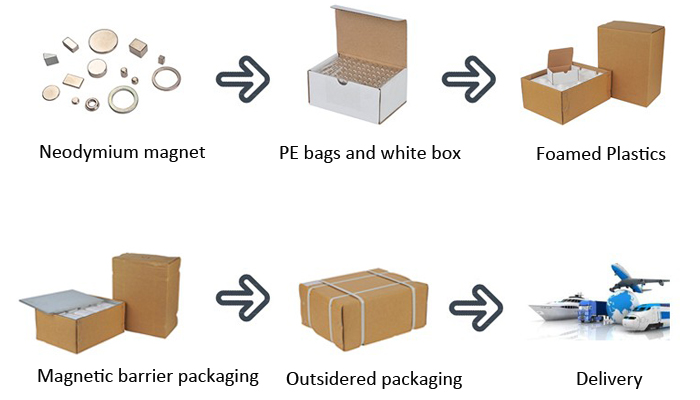The Halbeck Array is a special magnetic field generation system commonly used in laboratories and scientific research to generate high intensity magnetic fields. The array takes its name from its inventor, the Swedish physicist Klaus Halbach. Unlike conventional magnets, the Halbach array uses multiple curved segmented magnets arranged together to produce the desired shape of the magnetic field. This design allows for higher magnetic field strengths than conventional magnets, and the magnetic field shape can be adjusted as needed.
Below are the main features and descriptions of the Halbach Array Arc Segmented Magnets:
Arc-shaped magnet segments: The Hellebeck array consists of a series of arc-shaped magnet segments, which are usually made of strong magnetic materials such as permanent magnets or ferromagnetic materials. The shape and arrangement of these segments are designed to suit the desired magnetic field shape.
Customised magnetic field shapes: Unlike conventional magnets, the design of the Hellebeck array allows the user to create a wide range of complex magnetic field shapes, including curved, twisted, non-uniform and multi-pole fields. This is very useful for a number of special experiments and applications.
High magnetic field strength: Due to the special arrangement of the curved magnet segments, the Hellebeck Array can achieve relatively high magnetic field strengths, which is important for research and experiments that require strong magnetic fields.
Magnetic field direction control: By adjusting the arrangement and polarity of the arc segments, the direction and intensity distribution of the magnetic field can be effectively controlled.
Areas of application: Hellebeck arrays are commonly used in particle accelerators, nuclear magnetic resonance (NMR) instruments, electron-beam physics experiments, magnetic resonance imaging (MRI), optics and particle physics experiments, as well as in applications that require highly customised magnetic fields.
 China Neodymium And Ferrite Magnets Manufacturer & Supplier
China Neodymium And Ferrite Magnets Manufacturer & Supplier 








